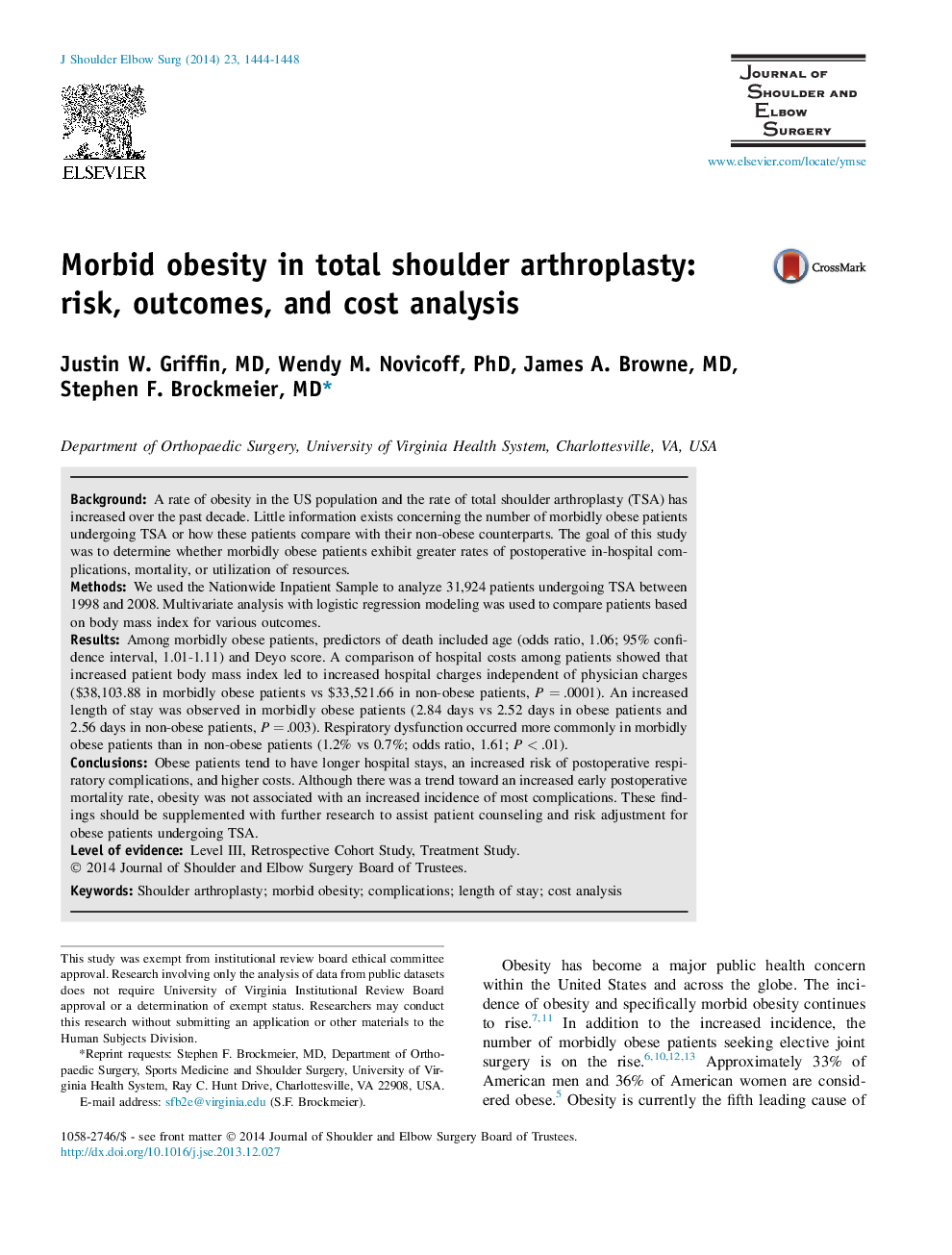| Article ID | Journal | Published Year | Pages | File Type |
|---|---|---|---|---|
| 4073764 | Journal of Shoulder and Elbow Surgery | 2014 | 5 Pages |
BackgroundA rate of obesity in the US population and the rate of total shoulder arthroplasty (TSA) has increased over the past decade. Little information exists concerning the number of morbidly obese patients undergoing TSA or how these patients compare with their non-obese counterparts. The goal of this study was to determine whether morbidly obese patients exhibit greater rates of postoperative in-hospital complications, mortality, or utilization of resources.MethodsWe used the Nationwide Inpatient Sample to analyze 31,924 patients undergoing TSA between 1998 and 2008. Multivariate analysis with logistic regression modeling was used to compare patients based on body mass index for various outcomes.ResultsAmong morbidly obese patients, predictors of death included age (odds ratio, 1.06; 95% confidence interval, 1.01-1.11) and Deyo score. A comparison of hospital costs among patients showed that increased patient body mass index led to increased hospital charges independent of physician charges ($38,103.88 in morbidly obese patients vs $33,521.66 in non-obese patients, P = .0001). An increased length of stay was observed in morbidly obese patients (2.84 days vs 2.52 days in obese patients and 2.56 days in non-obese patients, P = .003). Respiratory dysfunction occurred more commonly in morbidly obese patients than in non-obese patients (1.2% vs 0.7%; odds ratio, 1.61; P < .01).ConclusionsObese patients tend to have longer hospital stays, an increased risk of postoperative respiratory complications, and higher costs. Although there was a trend toward an increased early postoperative mortality rate, obesity was not associated with an increased incidence of most complications. These findings should be supplemented with further research to assist patient counseling and risk adjustment for obese patients undergoing TSA.
